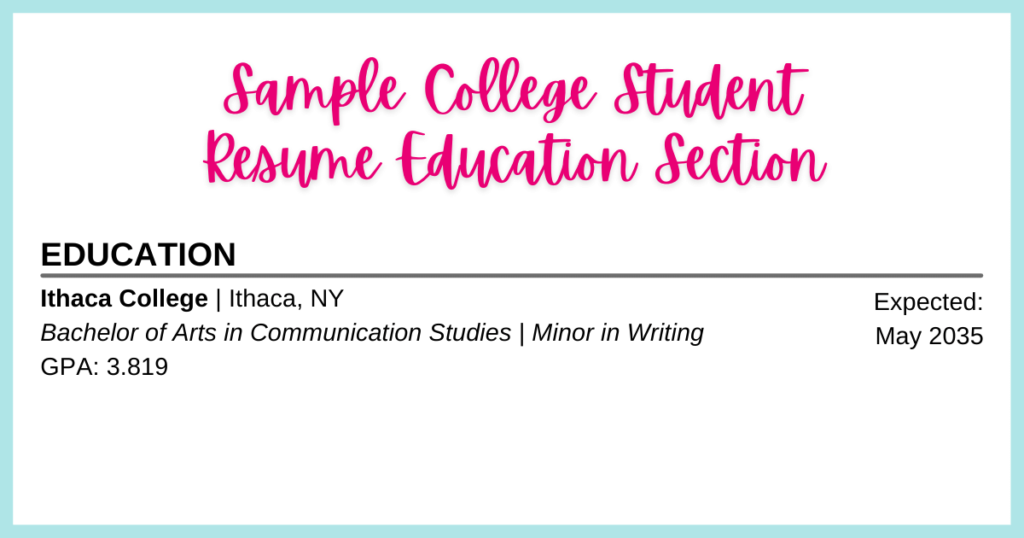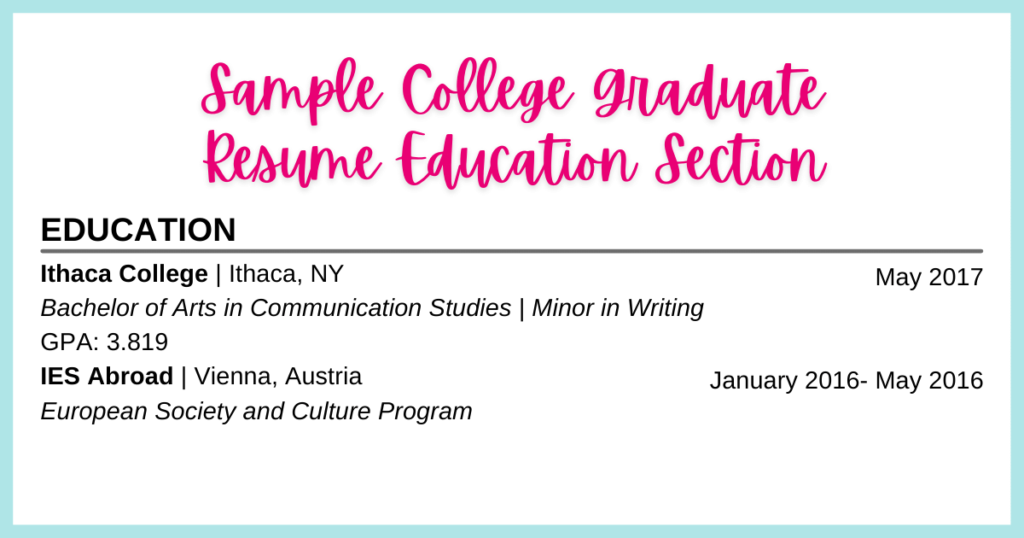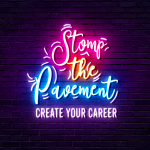Here’s an insider career secret: your resume education section is one of the first things employers check out. Even if they just take a quick glance, you want to make it easy for them to get the info they need about your education!
This post covers everything you need to know about writing the education section of your resume, including:
- How to put your bachelor’s degree on your resume
- How to put college on your resume if you haven’t graduated yet
- Do you put high school education on your resume?
- What to write in the education section of your resume
- Education section of resume examples
Alright, let’s dive into exactly how to write your resume’s education section!

This post includes affiliate links. Don’t worry, I only recommend products I use or would use myself! Learn more about my affiliate policy here.
Resume Education Section Step 1: School info
The education section of your resume is important because it gives employers important context to your experiences.
Your education background definitely should not be their deciding factor, but instead do just what the name says: give them a look into your background before getting to know your present self and future goals!
To make it easy on employers, the first thing listed under your “Education” heading should be the name, city, and state of your college. If you have multiple degrees (associates, bachelors, masters, PhD, etc), then list each one with the city and state.
Once you’ve listed the basics of your higher ed, it’s time to get specific.
Wondering where your classes are supposed to go? Click over to How to Put Related Coursework on your Resume!
Education Section of Resume Step 2: Degree(s) info
Underneath the name and location of your college(s), tell them what you studied.
One of the most common resume mistakes I’ve seen from clients is with listing their degree.
Usually, people want to write their degree as, “Major: Biology.” However, your resume shouldn’t say “major” at all!
It totally makes sense that knowing how to list a bachelor’s degree on your resume is confusing, especially since friends & family are always asking “What’s your major?”
Instead of major, your resume education section should list the full name of your degree. For example, my degree’s full name is Bachelor of Arts in Communication Studies. Even though, when people asked, I’d say I was majoring in Comm Studies.

There’s an important difference between a Bachelor of Arts and a Bachelor of Science. You probably have one of those if you graduated from a 4-year school. Even if it wasn’t an art or science program, your degree could still be one of those! It’s weird, but true!
You might not know (or care about) the difference, but employers will notice it. One isn’t better or more impressive than the other, it’s just something they’ll check out!
If you’re not sure about the full name of your degree, it should be listed on your college’s website. Look around your school or department’s website until you find it- it’s there somewhere, I promise!
If you have a minor, the rule flips. Since minors don’t typically have formal titles, you do list them as “Minor in ____.” So, the education section of your resume shouldn’t say “major,” but it can say “minor”!
Annoyed & confused by all the random resume rules? Sign up for my FREE workshop to learn how you can ditch your resume and transform your job search with networking!
80% OF JOBS ARE ON THE HIDDEN MARKET—
LEARN HOW TO FIND THEM IN THIS FREE WORKSHOP
Are online job apps making your career sour? The key to candy coating your career is networking!
In this FREE workshop, I’ll teach you how to ditch your resume & grow the best resource you have as a job seeker: your network!
Education Section of your Resume Step 3: GPA
Let me start by saying: it’s okay if your GPA is lower than you want it to be. Really, it doesn’t matter as much as you might think it does. And, if you want, you can even leave it off the education section of your resume.
The typical rule with GPA is: if it’s a 3.0 or above, list it. If not, then just leave it off.
Don’t worry- employers shouldn’t notice or care that it’s not listed if you leave it off! Your resume is to make YOU look good and stand out, so it doesn’t have to include anything you don’t want it to.
Feeling insecure about something on your resume (we’ve all been there)? Press play below to learn how your unique story can get you hired!
Education Section of Resume Step 4: Dates & listing an unfinished degree on your resume
One of the most important goals of your education section is to give context to your experiences. Including the date (month and year) your program finished is part of that!
Always format the date(s) of your education the same way you format the dates of your experiences. So, if they’re all aligned to the right, then align the dates in your education section to the right too!
Haven’t graduated yet? No worries!
Here’s how to put college on your resume if you haven’t graduated yet: write “expected” before the date your program finishes!
For example, if your program ends in 2035, your education section would say “Expected: May 2035.” This extra step helps avoid confusion and, again, gives more context!

Resume Education Section Step 5: Study abroad
Once you’ve typed your main education, then you can add any study abroad info to the education section of your resume!
Again, give context by listing the program’s name, city and country you studied in, and the dates you were there.
Want to take your career abroad? Check out The 6 Best International Job Sites!
After you’ve listed any study abroad information, your resume’s education section is pretty much done! Now, let’s answer one of the most common questions I had from clients…
80% OF JOBS ARE ON THE HIDDEN MARKET—
LEARN HOW TO FIND THEM IN THIS FREE WORKSHOP
Are online job apps making your career sour? The key to candy coating your career is networking!
In this FREE workshop, I’ll teach you how to ditch your resume & grow the best resource you have as a job seeker: your network!
Education Section of Resume Step 6: Do you put high school education on your resume?
In short, the answer is no. But, let’s dive a little deeper into it.
The goal of your resume is for employers to see you as professional and experienced, instead of as a recent high school student. So, your goal should be to phase out all of your high school stuff as you get more college or career experiences.
Wondering how to organize your job search and college schedule? Check out the best (and prettiest) planners ever at Ivory Paper Co!
My rule is you should have all of your high school education off your resume after your sophomore year of college (even if it’s super impressive, like being valedictorian).
Once you’ve deleted your high school info, your resume education section is ready to go!
Resume Education Section Examples
Education Section of Resume Examples: College Student

Education Section of Resume Examples: College Graduate

Writing the education section of your resume doesn’t have to be difficult! Your goal is to give employers context to your education and a clear picture of your background.
Make sure your resume education section includes the name and location of your college, formal title of your degree, GPA if it’s a 3.0 or above, date of program completion, and any study abroad info. Also, don’t include high school if you’re above a sophomore in college. Remember, the education section of your resume is something employers always check, so spend a little extra time on it!
Ready to ditch toxic jobs, Indeed, and resumes forever?! Watch my FREE workshop to learn how to transform your career with networking!






